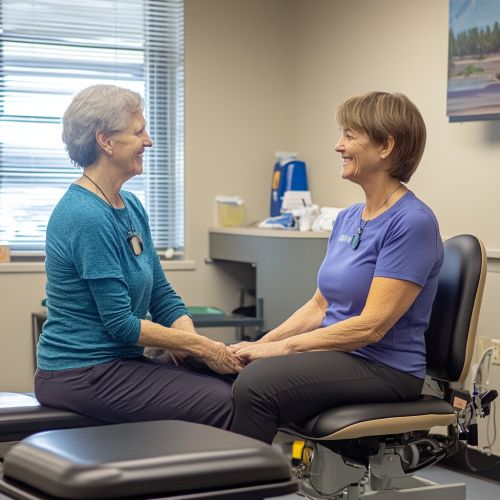Cognitive Mechanisms in Rehabilitation
Cognitive Mechanisms in Rehabilitation
Cognitive mechanisms play a crucial role in the field of rehabilitation, aiding in the recovery and improvement of individuals who have experienced cognitive impairments due to various conditions such as traumatic brain injury, stroke, neurodegenerative diseases, and mental health disorders. This article delves into the intricate cognitive processes involved in rehabilitation, exploring the underlying mechanisms, therapeutic approaches, and the latest research findings.
Introduction
Rehabilitation is a multidisciplinary process aimed at restoring or enhancing the functional abilities and quality of life of individuals with impairments or disabilities. Cognitive rehabilitation specifically focuses on improving cognitive functions such as memory, attention, executive functions, and problem-solving skills. The cognitive mechanisms involved in rehabilitation are complex and multifaceted, requiring a deep understanding of neuroplasticity, cognitive reserve, and compensatory strategies.
Neuroplasticity
Neuroplasticity refers to the brain's ability to reorganize itself by forming new neural connections throughout life. This ability is fundamental to cognitive rehabilitation, as it underlies the brain's capacity to recover from injury and adapt to new learning experiences. Neuroplasticity can be categorized into two types: structural plasticity and functional plasticity.
Structural Plasticity
Structural plasticity involves changes in the brain's physical structure, such as the growth of new neurons (neurogenesis) and the formation of new synapses (synaptogenesis). These changes are crucial for the recovery of cognitive functions following brain injury. Research has shown that activities such as physical exercise, cognitive training, and environmental enrichment can promote structural plasticity.
Functional Plasticity
Functional plasticity refers to the brain's ability to shift functions from damaged areas to undamaged areas. This process is essential for compensating for lost functions and is often facilitated through rehabilitation therapies. Techniques such as constraint-induced movement therapy (CIMT) and transcranial magnetic stimulation (TMS) are used to enhance functional plasticity in patients with cognitive impairments.


Cognitive Reserve
Cognitive reserve is the brain's resilience to neuropathological damage. It is influenced by factors such as education, occupational complexity, and engagement in intellectually stimulating activities. Individuals with higher cognitive reserve are better able to cope with brain injuries and are more likely to benefit from rehabilitation interventions.
Mechanisms of Cognitive Reserve
The mechanisms underlying cognitive reserve include increased synaptic density, enhanced neural efficiency, and the recruitment of alternative neural networks. These mechanisms enable individuals to maintain cognitive function despite brain damage. Cognitive reserve can be enhanced through lifelong learning, social engagement, and physical activity.
Compensatory Strategies
Compensatory strategies are techniques used to bypass or mitigate cognitive deficits. These strategies can be internal, involving mental processes, or external, involving the use of tools and aids.
Internal Compensatory Strategies
Internal compensatory strategies include mnemonic devices, visualization techniques, and self-monitoring. These strategies help individuals to improve memory, attention, and executive functions. For example, mnemonic devices such as acronyms and rhymes can aid in the recall of information.
External Compensatory Strategies
External compensatory strategies involve the use of external aids such as calendars, planners, and electronic devices. These tools assist individuals in managing daily tasks and compensating for memory and attention deficits. The use of assistive technology, such as speech-to-text software and reminder apps, has become increasingly prevalent in cognitive rehabilitation.
Therapeutic Approaches
Various therapeutic approaches are employed in cognitive rehabilitation to target specific cognitive deficits. These approaches include cognitive training, neurofeedback, and pharmacological interventions.
Cognitive Training
Cognitive training involves structured exercises designed to improve specific cognitive functions. These exercises can be computer-based or therapist-led and are tailored to the individual's needs. Cognitive training has been shown to be effective in improving memory, attention, and executive functions in individuals with cognitive impairments.
Neurofeedback
Neurofeedback is a technique that uses real-time monitoring of brain activity to teach individuals to regulate their brain function. This approach has been used to treat conditions such as attention deficit hyperactivity disorder (ADHD), traumatic brain injury (TBI), and stroke. Neurofeedback can enhance cognitive functions by promoting neuroplasticity and improving neural efficiency.
Pharmacological Interventions
Pharmacological interventions involve the use of medications to enhance cognitive function. Drugs such as cholinesterase inhibitors and memantine are commonly used to treat cognitive impairments in conditions like Alzheimer's disease. These medications work by modulating neurotransmitter systems to improve memory and cognitive function.
Latest Research Findings
Recent research in cognitive rehabilitation has focused on the development of novel interventions and the identification of biomarkers for cognitive recovery. Advances in neuroimaging techniques, such as functional magnetic resonance imaging (fMRI) and positron emission tomography (PET), have provided insights into the neural mechanisms underlying cognitive rehabilitation.
Novel Interventions
Innovative interventions such as virtual reality (VR) and brain-computer interfaces (BCIs) are being explored for their potential to enhance cognitive rehabilitation. VR provides immersive environments for cognitive training, while BCIs enable direct communication between the brain and external devices, facilitating motor and cognitive recovery.
Biomarkers for Cognitive Recovery
Biomarkers such as brain-derived neurotrophic factor (BDNF) and inflammatory cytokines are being investigated for their role in cognitive recovery. These biomarkers can provide valuable information about the effectiveness of rehabilitation interventions and the prognosis of cognitive recovery.
Conclusion
Cognitive mechanisms in rehabilitation encompass a wide range of processes and strategies aimed at improving cognitive functions in individuals with impairments. Understanding the principles of neuroplasticity, cognitive reserve, and compensatory strategies is essential for developing effective rehabilitation interventions. Ongoing research continues to advance our knowledge of cognitive rehabilitation, offering new hope for individuals with cognitive impairments.
